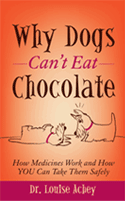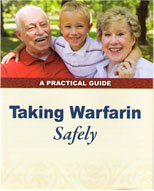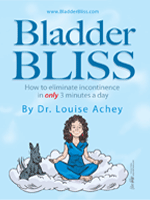Archive for October, 2012
October 26th, 2012. Filed Under:
Bladder Problems,
Caffeine,
Heart Problems.
Tags:
bladder problems,
coffee,
DSHEA,
energy drinks,
ephedra,
guarana,
heart problems,
kola,
mate,
phenylephrine,
pseudoephedrine,
tea,
weight loss,
yerba mateIn an article published online by Forbes on 10/22/12 by David DiSalvo, titled, Can Energy Drinks Cause Heart Attacks?, Mr. DiSalvo reports that the FDA is conducting an ongoing investigation into the deaths of several people who had consumed large amounts caffeine through energy drinks, including the recent death of a 14-year old girl who died after drinking two 24-oz Monster energy drinks in a 24 hour period. Her death is now suspected to be from the combination of excessive caffeine intake and an underlying condition of her blood vessels.
Mr. DeSalvo concluded that killing yourself with coffee or energy drinks is highly unlikely, mostly because the lethal dose of caffeine for an adult is 10 grams, which is significantly higher than any adult is likely to consume. Ten grams of caffeine? Let’s see, that would be 50 tablets of maximum strength No-Doz®, 66 cups of brewed coffee, or 125 cans of Red Bull®.
Caffeine is found in a variety of plants from all over the world which are prized for their ability to stimulate thinking and improve alertness. Common botanical sources of caffeine include coffee beans, cacoa beans, tea leaves, kola nuts and mate, which are brewed into a hot or cold beverage. More recently, purified caffeine is added to sodas, chewing gum and mints.
Not all caffeine is labeled as caffeine. Guarana and yerba mate are natural sources of caffeine, which should not be overlooked when you read the label of an energy drink or supplement.
Caffeine increases alertness and the ability to perform physical tasks more quickly and relieves signs of fatigue.
Some people can drink multiple cups of coffee with minimal effects, while for others having just one cup of joe keeps them tossing and turning all night. Others are susceptible to elevations in blood pressure or a rapid heart beat, which caffeine can aggravate.
Both pseudoephedrine, which is in the original formulation of Sudafed®, as well as phenylephrine, found in the formulation of Sudafed PE®, can add to caffeine’s effect and cause nausea, stomach burning, and headache.
Although caffeine can be useful to improve alertness during studying or while driving, some of the symptoms of caffeine use can be downright unpleasant, such as an increase in stomach acid secretion and a “burning”sensation, restlessness, tremor, an increase in urination, insomnia, and heart palpitations. If you are taking medicine to decrease heartburn or to slow down a rapid or an irregular heart beat, if you have uncontrolled blood pressure, or if you suffer from a bladder problem such as urinary incontinence, you should minimize your intake of caffeine.
Here are some examples of the amount of caffeine contained in common beverages:
Cola, Mtn Dew® (16 oz): 47-73mg
Espresso, one shot: 60-75 mg
Red Bull®, No Fear®: 80 mg
Black tea, brewed: 40-120mg
Coffee, brewed, 1 cup: 120-150mg
Espresso, two shots: 120-150mg
Full Throttle® (16 oz): 144mg
Monster® (16 oz): 160mg
Some common medicines that contain caffeine are:
Anacin® Max Strength (2 tabs): 64mg
5-Hour Energy®: 120-150mg
Extra Strength 5-Hour Energy®: 180-220mg
Midol® Complete (2 tabs): 120mg
Excedrin® Extra Strength (2 tabs): 130mg
No-Doz®, Vivarin® (1 tablet): 100mg, 200mg
Note: Guarana and Yerba Mate are natural sources of caffeine
Although the maximum dose of caffeine is quite high, mixing caffeine with other weight loss products or decongestants can cause problems at much lower doses such as 500mg daily, the equivalent of 4 cups of brewed coffee or three 16 ounce cans of a Monster energy drink.
In April of 2004, the FDA banned the supplement ephedrine through the Dietary Supplement Health and Education Act (DSHEA) of 1994. Ephedrine was an ingredient in popular weight loss products and in energy boosters for improved athletic performance. Steve Baechler, a major league pitcher for the Boston Orioles, was taking a product containing ephedra when he died suddenly at the age of 23. Taking ephedra along with caffeine can increase your risk of experiencing serious side effects such as heart palpitations, heart attacks, strokes, seizures, and even death.
If you aren’t looking to give up your morning cup of coffee but are interested in how much caffeine is in some of the products you consume, visit www.mayoclinic.com/health/caffeine/AN01211 for details, or stop by this website, completely devoted to caffeine: www.energyfiend.com.
Dr. Louise Achey, Doctor of Pharmacy is a 30-year veteran of pharmacology. She’d love to answer your question about medication and explain how to prevent misadventures with medicines. Send your questions and comments to www.AskDrLouise.com.
Leave a Comment
October 22nd, 2012. Filed Under:
Breast Cancer,
Calendula,
Homeopathic Remedies,
Skin Care.
Tags:
Boiron,
calendula cream,
calendula gel,
calendula ointment,
dermatitis,
lanolin,
radiation,
radiation therapy,
WeledaQ: My best friend is undergoing radiation for breast cancer, and trying to figure out how to protect her skin during the treatments. Are there any creams that could help her?
Nearly 8 out of 10 people will experience a significant skin reaction during their radiation treatments for cancer. Called radiation dermatitis, it usually starts as redness and warmth and looks a lot like a rash, with increased sensitivity to touch and a “tight” feeling. As the skin reaction becomes more severe, dryness, itching and peeling occur, leaving tender, red skin, which may ooze clear fluid and become crusty. The chance of experiencing a serious skin reaction increases if the skin receiving radiation has had previous surgery, has another skin surface touching it, if the person smokes or is a diabetic.
The keys to prevention of radiation dermatitis are avoiding irritating the skin, decreasing overall stress, and keeping the skin hydrated. Washing the skin gently using a mild soap and water has been shown to prevent skin reactions compared to just rinsing with water. When advised to treat their skin gently, most patients are advised to use a “mild, non-alkaline soap, preferably unscented”. Which ones are best? There isn’t any consensus about that, or evidence that any particular soap is better than another. Gentle soaps like Dove, Ivory, Neutrogena are fine. Avoiding highly scented soaps such as Coast® or Irish Spring® may help decrease skin irritation, as well as avoiding either hot or very cold water and never scrubbing with a washcloth or, worse, a loofah.
In the past women have been advised to avoid using any antiperspirants containing aluminum because of concerns that aluminum could interfere with the dose of radiation given during treatments. Thankfully, this has been completely disproven; there is no reason to give up wearing deodorant or antiperspirant during treatment unless your underarm develops broken skin.
Keeping treated skin moisturized can help prevent serious radiation-related reactions. Which cream or lotion should you use? Are there any products proven helpful in preventing pain, itching or peeling? Although there are a few small trials with several prescription-only products, the most compelling evidence is a study done in 1999 by a group of French researchers featuring calendula officinalis, an extract from the marigold plant.
The French study compared a calendula ointment manufactuered by Boiron with a prescription-only wound care product containing the active ingredient trolamine (Biafine®). In this well-designed trial of 254 women who were receiving radiation for breast cancer, half of the women in the study were assigned to use trolamine to prevent radiation dermatitis and the other half were assigned to use the calendula. The calendula ointment proved significantly better in preventing skin reactions and in reducing pain associated with radiation dermatitis when compared to Biafine®, but was judged difficult or unpleasant to apply by one third of the participants.
As a pharmacist trained in various types of formulations, the surprising evidence of calendula’s effectiveness and the complaints about applying it intrigued me. Were there other formulations of calendula available that would be more pleasant than the product used in the French study?
Hmm…I decided to get some calendula-containing products and find out for myself. The calendula product from the French study is an ointment made by Boiron, a French homeopathic company. It’s basically a calendula-infused petroleum jelly, and very stiff, greasy, and hard to spread. Another calendula ointment, made by Weleda, spreads well but contains lanolin. Lanolin is wool fat, and can cause skin reactions. The only cream I evaluated was Arbordoun’s Abundantly Herbal Calendula Cream®, which besides calendula, contains other ingredients such as oregon grape. It also contains olive oil instead of petrolatum, which makes it easy to spread, but it takes about 5 minutes to “soak in” after you apply it. It doesn’t leave a film after that, though. Olive oil has been shown to be possibly beneficial in protecting skin from radiation damage.
After trying out several different formulations of calendula, I have an answer. For prevention of radiation dermatitis I recommend the calendula gel made by Boiron, instead of their ointment. It spreads easily, gives a nice cooling effect, and soaks in so quickly that I have to stop myself from applying more of it. It doesn’t leave any sticky or greasy film, either.
Dr. Louise Achey, Doctor of Pharmacy is a 30-year veteran of pharmacology. Please send your questions and comments to www.AskDrLouise.com.
Leave a Comment
When I stumbled across the research on calendula in prevention of skin irritation during radiation treatment for breast cancer, I decided to do some evaluation of my own. Here is one pharmacist’s opinion (mine) of some of the formulations currently available. I hope my comments help you narrow down whether one of these formulations of calendula might be a good choice for you. My favorites? Depends on whether you’re looking for a good first aid ointment, hand cream for very dry skin, or something to apply after a radiation treatment. Here’s the group:
Calendula Ointment by Boiron (France)
Description: 1 oz (30 gm) tube. Official product listed in the Homeopathic Pharmacopoeia of the United States. Calendula officinalis 4% infused into white petrolatum (petroleum jelly) with no parabens (preservative). Directions are to apply thin layer to clean skin 3 times daily or as needed.
Pros: Product used in well-designed clinical trial that significantly reduced incidence and severity of skin damage from radiation in breast cancer patients. Only two ingredients. White petrolatum traps moisture into the top layer of the skin.
Cons: Stiff, sticky and greasy to apply. Stains clothing. Participants in trial complained that it was unpleasant to use.
Calendula Gel by Boiron (France)
Description: 1 oz (30 gm) tube. Official product listed in the Homeopathic Pharmacopoeia of the United States. Calendula officinalis 7% in a clear gel with no parabens (preservative). Directions are to apply a thin layer to clean skin 3 times daily or as needed.
Pros: Clear gel with cooling effect; easy to apply, quickly absorbed. Seems as effective as the ointment formulation. No petroleum products.
Cons: May sting if applied to broken skin.
Calendula Ointment by Weleda (Switzerland)
Description: 0.88 oz (25 gm) tube. Calendula officinalis 5 gm in a smooth ointment base that smells faintly like lanolin. Ingredients include beeswax, lanolin, lanolin alcohols, and sesame oil. Directions are to apply to affected area 3-4 times daily.
Pros: Creamy ointment that spreads easily. No petroleum products.
Cons: Greasy and sticks to clothing. Faint lanolin smell. May cause skin reaction due to significant lanolin content.
Calendula Salve by MJ’s Herbals
Description: 1 oz (30 gm) jar. Certified organic ingredients: calendula blossoms and Vitamin E oil in a base of olive oil and beeswax.
Pros: Translucent ointment in a glass jar that fits easily into your hand. Pleasant botanical scent, easy to apply and spreads very easily. No petroleum products.
Cons: Greasy and sticks to clothing.
Arbordoun’s Abundantly Herbal Calendula Cream
Description: 4 oz (120 gm) plastic jar. Prepared by hand with organic ingredients by woman-owned business on Lopez Island. Herbal extracts of calendula, oregon grape, comfrey, and aloe in a base of olive oil, vegetable glycerin, beeswax, vitamin E oil, lavender oil and citrus seed extract.
Pros: Spreads smoothly and soaks in after about 5 minutes. Lavender fragrance. Generous amount for the price. No petroleum products. Made by hand in Washington State by a woman owned business.
Cons: Calendula concentration not specified; also contains oregon grape and comfrey. Is oily when first applied, but will soak in and leave no film after about 5 minutes. It’s easy to over-apply it though, leaving an oily film.
Calendula Oil by Weleda (Switzerland)
Description: 0.34 oz (10 ml) vial of oil. Calendula officinalis extract and chamomile extract in sweet almond oil with fragrance and small amounts of limonene, linalool, and geraniol.
Pros: Oil soaks in after a while. Clean, geranium-like scent.
Cons: No applicator. Oily, with a noticable scent. Leaves an oily film that can stick to clothing.
Out of these 6 formulations, here are my personal and professional recommendations:
For prevention of radiation skin burn or breakdown, I recommend Calendula gel by Boiron because it’s easy to apply, cooling, and leaves no film to stick to clothing.
For first aid for burns, cuts and skin irritations, my choice is MJ’s Calendula Salve. It spreads smoothly, and the jar fits nicely in your hand.
For dry, itchy skin in place of a using a prescription or non-prescription cortisone cream or ointment, my recommendation is Arbordoun’s Abundantly Herbal Calendula Cream. It seems to seal in moisture and relieve dryness best. But it barely beat out Boiron’s Calendula gel, which I also found quite effective in relieving skin dryness and itching.
This is the third in a series featuring topics relating to breast cancer. Part 4 discusses products for nausea and vomiting.
Dr. Louise Achey, Doctor of Pharmacy is a 30-year veteran of pharmacology. Please send your questions and comments to www.AskDrLouise.com.
Leave a Comment
Q: I just bought some Sudafed® but it doesn’t seem to work for me any more. Is there anything else I can take that would work better?
If you purchased Sudafed® from the allergy and cold medicine section of your local pharmacy or grocery store, it’s not the same medicine. In fact, if you look closely, the box has Sudafed PE® on it.
Sudafed PE® is different than the Sudafed® you remember. The original formulation of Sudafed® contains pseudoephedrine. The newer version of it has phenylephrine, which is why the name on the package is Sudafed PE®. Both pseudoephedrine and phenylephrine are decongestants designed to relieve stuffy nose symptoms but their potency and effectiveness are different.
Phenylephrine is effective as the topical decongestant in Neo-Synephrine® nose spray but Sudafed PE® doesn’t work as well. For one thing, phenylephrine is not well absorbed into your body from your stomach. Some of the phenylephrine is left behind instead of getting into your bloodstream, where it needs to be to do its job.
The other reason Sudafed PE® doesn’t work as well as Sudafed® is because it is less potent. Phenylephrine and pseudoephedrine are both effective as nasal decongestants when taken as a 30mg dose. Phenylephrine has caused high blood pressure and stroke at that dose, so the Food and Drug Administration (FDA) has limited it to a 10mg dose, only 1/3 of the adult dose considered equivalent to pseudoephedrine. Sudafed PE® is unlikely to cause any serious side effects at this dose, but it’s also unlikely to give you much relief from your stuffy nose.
Why was an effective and popular non-prescription medicine replaced with a wimpy one? Pseudoephedrine became too popular for its own good by being a key ingredient in making methamphetamine. In 2005, the USA Patriot Act restricted the sale of key ingredients of methamphetamine, called precursors, in an attempt to combat meth production, trafficking and abuse.
The compounds identified as precursors are ephedrine, phenylpropanolamine, and pseudoephedrine. Beginning on September 30, 2006, products containing any of these were to be kept “behind the counter” in pharmacies or under lock and key by grocery stores or other vendors. Today, except in Oregon and Mississippi, you can still purchase the original formulation of Sudafed® if you ask for it, show your ID and sign for it. You cannot purchase more than 3.6 grams in a 24-hour period or 9 grams in a month.
My pharmacy moved our stock of cold medicines with pseudoephedrine behind our counter nearly a year before the restrictions took effect because we were getting ripped off. When we first noticed the problem we tried moving them to where they were in plain view of the pharmacist. Despite that, the shelf would be bare again within a day or two. Pretty brazen, shoplifting them right in front of the pharmacist!
Did these restrictions on pseudoephedrine work? Not according to a report published April 30, 2012 by the National Association of State Controlled Substances Authorities (NASCSA). Titled Impact of State Laws Regulating Pseudoephedrine on Methamphetamine Trafficking and Abuse, the report describes how “smurfing” – the practice of buying pseudoephedrine frequently by using various fake IDs at multiple locations, has circumvented the federally mandated restrictions and recommends a different approach.
The state of Oregon took the Patriot Act restrictions on methamphetamine precursors even farther and changed pseudoephedrine into a prescription-only controlled substance with restrictions and monitoring just like the narcotic pain reliever Vicodin®. Oregon is one of the only states to experience a consistent and dramatic decline in meth lab incidents and trafficking since 2006 and NASCSA is now petitioning the Drug Enforcement Administration (DEA) to follow Oregon’s example and reclassify pseudoephedrine as a controlled substance.
If Sudafed® becomes a prescription-only medicine it would be more expensive and require a clinic visit, driving an inexpensive and effective systemic nasal decongestant out of reach of many Americans.
For now, except in Oregon and Mississippi you can buy the old formulation of Sudafed® or generic pseudoephedrine by stopping by a pharmacy, showing your ID and signing for it.
Dr. Louise Achey, Doctor of Pharmacy is a 30-year veteran of pharmacology. Please send your questions and comments to www.AskDrLouise.com.
©2012 Louise Achey
Leave a Comment



